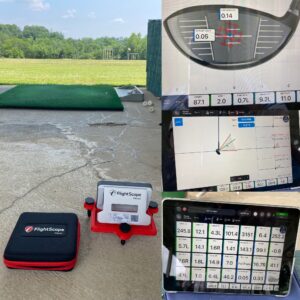Don’t get me wrong — golf isn’t easy. But it shouldn’t be as hard as we’ve made it out to be. Despite all the innovations in equipment and a lot of money spent on the latest gear, the average weekend golfer has a hard time hitting the ball solidly and consistently. Hook, slice, fat and thin. Chunk, top, flub, skull. But when you understand the golf swing and learn to use natural forces and elements to your advantage it’s remarkable how much easier it becomes.
The industry has become a bit too enamored with lines and positions. Technology is both a blessing and a curse and it is ever so true in golf. Of course, knowing your swing path, launch angles, speeds, spin, smash factor, apex, etc. can be extremely useful. No doubt. However, some of what we look at in terms of numbers and videos can be overanalyzed and misunderstood.
Make no mistake, the most important position in golf is impact. There is no other more important position. Some would even say it’s the only position that really matters. The little white ball doesn’t know anything about your takeaway, backswing, position at the top, swing plane, and not even your grip. Do they have an effect? Of course they do. However, the ball only knows the clubface at impact. The rest is all secondary.
When we learn to make solid contact with the ball first, it helps us develop a feel for what impact is; the way the club feels coming through square; the way that our hands feel; our arms and body being in sync with neither being too early or too late; the sequence and the transition in rhythm. Furthermore, hitting the ball solidly builds confidence as we visually see the ball jump off the clubface and fly on a trajectory and flight pattern that we like. The center-face contact feels pure in our hands. The crisp sound of a flush shot is music to our ears. All of these senses increase our understanding and awareness, and as our brain processes it all we build muscle memory for a template to make solid impact again and it happens faster and more effectively.
Once we establish making solid contact, our brains actually start to instruct our bodies — our muscles, arms, legs, hands — on what we need to do in order to create that same solid contact again. In other words, our brains start to figure out the golf swing without being told. Imagine that! It becomes experiential and intuitive, and then experiential all over again. This positive reinforcement is a virtuous cycle for our development.
In business, we often say, “Start with the end in mind.” The same is true in learning golf. If you asked a business executive what the end state or end goal is or should be, or what is critical for you to do or understand in order to be successful, and they answered, “We’ll get to that,” would you believe him/her? But if you were only to develop a better understanding of the end state, naturally, then it would be easier for you to get there because the path to get there would become that much clearer. It gets easier (through experience and intuition) for you to self-determine what is needed to get there. Impact is what matters. Start there.
Unfortunately, many people have used a far less effective approach. They’ve focused on getting their bodies – hips, back, shoulders, feet, legs, knees, elbows, you name it, in certain “positions” and on certain “lines” throughout the backswing, downswing and follow through based on the assumption that only then will they be able to make good contact at impact. Focusing on “ideal” lines and positions, or arguably worse, focusing on “Tour average” lines and positions are approaches that miss the point of what matters. These approaches don’t start with the end in mind. Rather, they attempt to put the complex pieces together on the “right” planes and lines in hopes that it ends up working.
Similar to business, more students taking instruction should respectfully ask their instructors to explain “impact.” If the instructor doesn’t explain impact to you with clarity and precision and help you hit real golf shots (even a simple putt where you can make solid contact and learn impact) from the beginning or they just tell you ‘we’ll get to that,’ then maybe you should seriously ask yourself whether you are getting sound instruction.
I am often surprised to hear the kinds of things that beginners tell me about their lessons (with someone else) before they come to me. “Well, he basically changed my grip and had me hit a bucket of balls for an hour. Such a waste of time.” “I took five lessons and didn’t make any improvement.” “He had me do something, what is it called — ‘cup’, no ‘bow,’ at the top?”
With me, I assure you, we’ll be laser focused first on understanding impact, and then we’ll work to hit real golf shots, even if they are short chips or short putts. We’ll first learn what impact looks and feels like and I’ll show you how to make that crisp, clean contact with the ball in the sweet spot with a square club face. Then, we’ll build outward from there. That is the best way, not vice versa.
Before you know it, you’ll be hitting golf shots saying, “Whoa! That never happens!” So, what are you waiting for?



